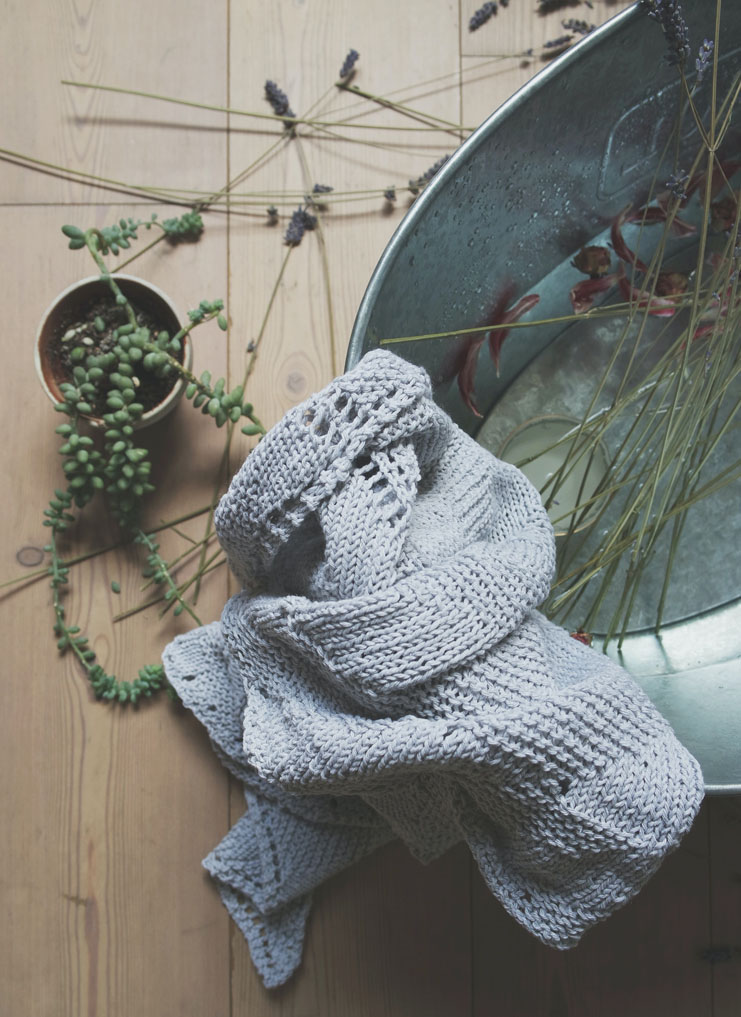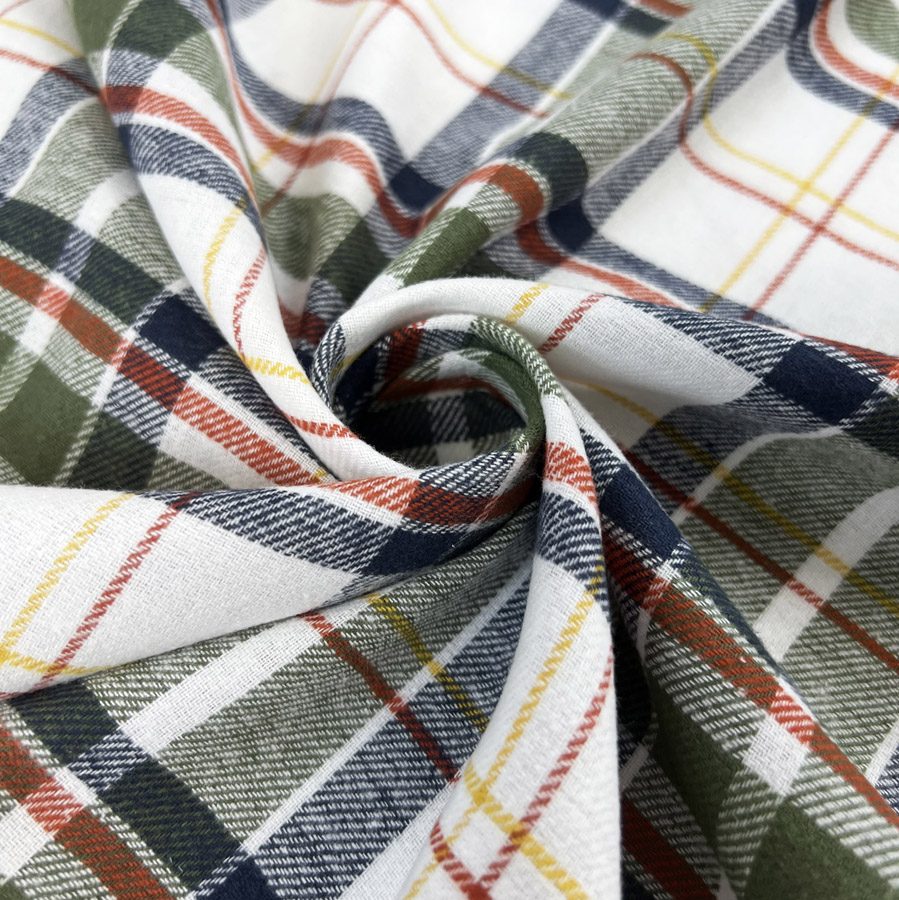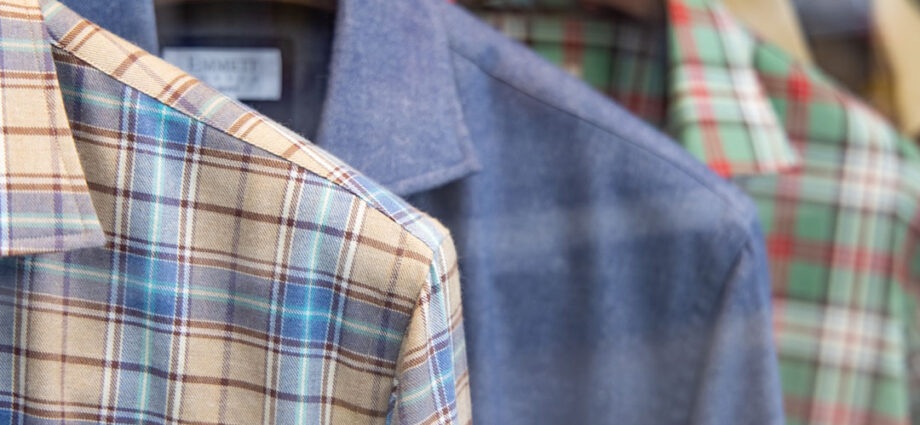What Is Flannel ?
Flannel is a soft and warm fabric that is often made from wool or cotton. The fabric is known for its fuzzy surface, which is achieved through a process called napping. Napping involves raising the fibers on the surface of the fabric, creating a soft and slightly fuzzy texture.
Wool flannel is traditionally associated with colder weather and is appreciated for its insulating properties. Cotton flannel, while also providing warmth, is often used for a variety of casual and comfortable garments, such as shirts and pajamas. Flannel shirts, in particular, are popular for their cozy feel and are commonly worn during the fall and winter seasons.
Flannel can come in various colors and patterns, ranging from classic plaids to solid hues. Its popularity as a textile choice is often tied to its comfort and versatility in creating garments suitable for both casual and outdoor activities.


Here’s the details of Flannel Fabrics
When to wear Flannel?
Flannel is a versatile fabric suitable for various occasions and seasons. Here are some recommendations on when to wear flannel:
- Fall and Winter Seasons:
- Flannel is particularly popular during cooler months due to its warmth and insulating properties. It’s an excellent choice for keeping cozy in the fall and winter.
- Flannel is particularly popular during cooler months due to its warmth and insulating properties. It’s an excellent choice for keeping cozy in the fall and winter.
- Casual Settings:
- Flannel is inherently casual, making it ideal for relaxed settings. Wear it for casual outings, weekends, or informal gatherings.
- Flannel is inherently casual, making it ideal for relaxed settings. Wear it for casual outings, weekends, or informal gatherings.
- Outdoor Activities:
- Its comfort and durability make flannel well-suited for outdoor activities like hiking, camping, or bonfires. It provides both warmth and ease of movement.
- Its comfort and durability make flannel well-suited for outdoor activities like hiking, camping, or bonfires. It provides both warmth and ease of movement.
- Layering:
- Use flannel as a layering piece. It works well over a T-shirt or under a jacket, adding both style and warmth to your outfit.
- Use flannel as a layering piece. It works well over a T-shirt or under a jacket, adding both style and warmth to your outfit.
- Work Environments with Casual Dress Codes:
- In workplaces with casual or business-casual dress codes, a well-chosen flannel shirt can strike a balance between comfort and professionalism.
- In workplaces with casual or business-casual dress codes, a well-chosen flannel shirt can strike a balance between comfort and professionalism.
- Weekend Relaxation:
- Embrace the laid-back feel of flannel on weekends. Whether you’re running errands or lounging at home, it’s a comfortable and stylish choice.
- Embrace the laid-back feel of flannel on weekends. Whether you’re running errands or lounging at home, it’s a comfortable and stylish choice.
- Fall Festivities:
- Flannel is often associated with fall activities like apple picking, pumpkin patches, and hayrides. It adds a seasonal touch to your wardrobe.
Napping Process
Napping, a crucial step in crafting flannel, involves brushing the fabric to raise its fibers and create a soft, fuzzy texture. This meticulous process, often applied to wool or cotton, contributes to the fabric’s characteristic comfort. The direction, intensity, and duration of brushing are carefully controlled to achieve the desired texture. Beyond enhancing tactile qualities, napping also creates tiny air pockets within the fabric, boosting its insulating properties. This transformative art turns a simple woven fabric into the beloved, warm, and cozy flannel, suitable for a range of textiles.
Material Composition
- Wool Flannel: Traditionally, flannel was often made from wool. Wool flannel provides excellent insulation and warmth, making it well-suited for colder temperatures.
- Cotton Flannel: Cotton flannel has become more common and is favored for its softness and breathability. It is often brushed on both sides to enhance its soft, fuzzy texture.
Characteristics
- Softness: Flannel is known for its soft and comfortable feel against the skin.
- Warmth: Due to its napped texture and often being made from wool or brushed cotton, flannel provides warmth, making it a popular choice for cold weather clothing.
- Breathability: Cotton flannel, in particular, is breathable, allowing it to be worn comfortably in a variety of temperatures.
Patterns and Styles
- Plaid: Classic plaid patterns are often associated with flannel, and plaid flannel shirts are iconic in casual and outdoor fashion.
- Solids and Prints: Flannel comes in various solid colors and prints, offering versatility in design.
Common Uses
- Apparel: Flannel is commonly used for making a range of apparel, including shirts, pajamas, robes, and jackets.
- Bedding: Flannel sheets and blankets are popular choices for bedding, providing a warm and cozy option for colder nights.
Care and Maintenance
- Washing: Flannel garments typically require special care, and it’s common to follow specific washing instructions to maintain the fabric’s softness and appearance.

